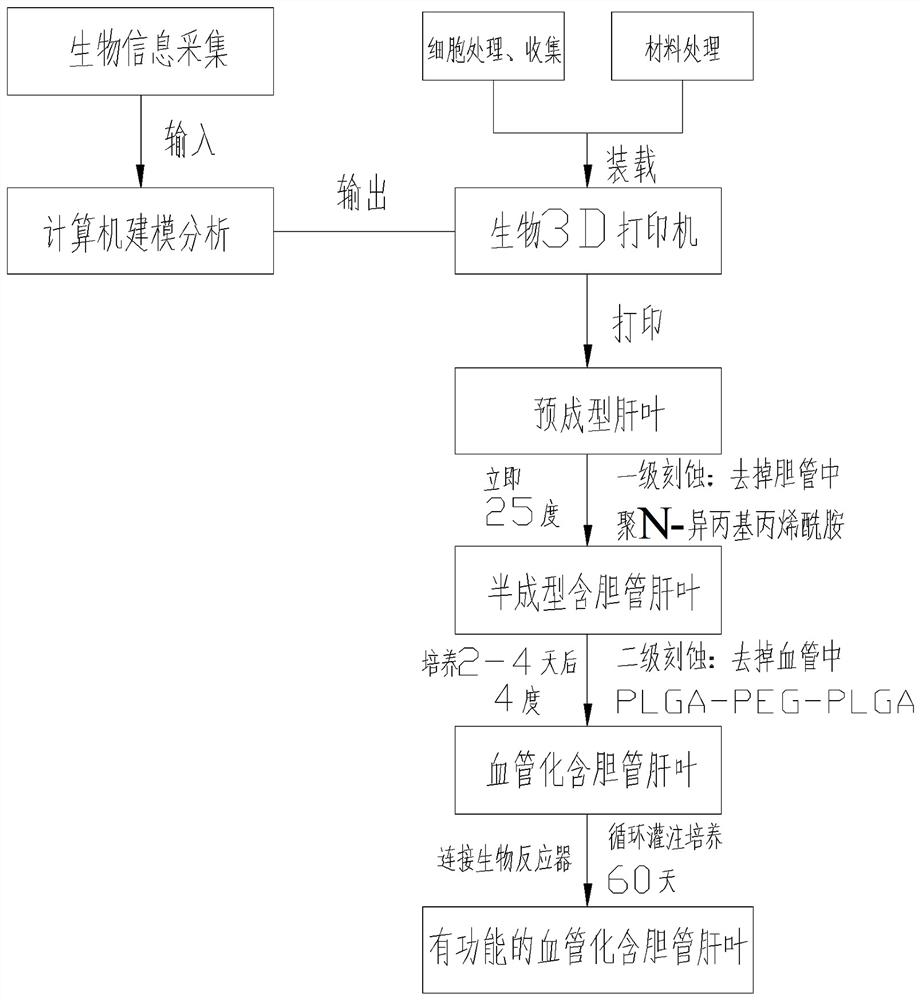Construction method of biomimetic vascular network inside large-volume tissue-engineered tissues and organs
A bionic blood vessel and tissue engineering technology, applied in the field of biomedical engineering, can solve problems such as difficulty in forming a vascular network, short survival time, and limited size of artificial liver tissue, and achieve the effect of solving insufficient mechanical strength and optimizing biological functions
- Summary
- Abstract
- Description
- Claims
- Application Information
AI Technical Summary
Problems solved by technology
Method used
Image
Examples
Embodiment Construction
[0037] The present invention illustrates the method of the present invention by taking the preparation of the vascular network in the artificial bile duct-containing hepatic lobe as an example.
[0038] see figure 1 , this embodiment discloses a method for preparing artificial bile duct-containing hepatic lobes based on biological 3D printing technology, including the following steps:
[0039] 1. Biological information collection and modeling:
[0040] 1) Personalized collection of 3D data of the internal and external structure of the hepatic lobe containing bile ducts and the vascular network of normal people through CT, MRI and micro-3D scanning technology;
[0041] 2) Input the collected biological information into computer software, and express the actual tissue appearance and microenvironment as a multi-material and multi-scale geometric model (the two ends of the vascular network are designed as two main blood vessels in and out, which can be connected to the bioreactor...
PUM
 Login to View More
Login to View More Abstract
Description
Claims
Application Information
 Login to View More
Login to View More - R&D
- Intellectual Property
- Life Sciences
- Materials
- Tech Scout
- Unparalleled Data Quality
- Higher Quality Content
- 60% Fewer Hallucinations
Browse by: Latest US Patents, China's latest patents, Technical Efficacy Thesaurus, Application Domain, Technology Topic, Popular Technical Reports.
© 2025 PatSnap. All rights reserved.Legal|Privacy policy|Modern Slavery Act Transparency Statement|Sitemap|About US| Contact US: help@patsnap.com


